12 Beautiful Self-Seeding Plants for Effortless Annual Blooms
Self-seeding plants are a wonderful way to bring new growth to your garden year after year. These plants do the work for you by spreading their seeds naturally, ensuring fresh greenery with minimal effort. If you are looking for an easy way to keep your garden flourishing, these plants are perfect for your space. They are low-maintenance and offer a beautiful display of color and texture. Let’s explore some great options that can thrive and multiply on their own.
This post may contain affiliate links, which helps keep this content free. Please read our disclosure for more info.
Poppies
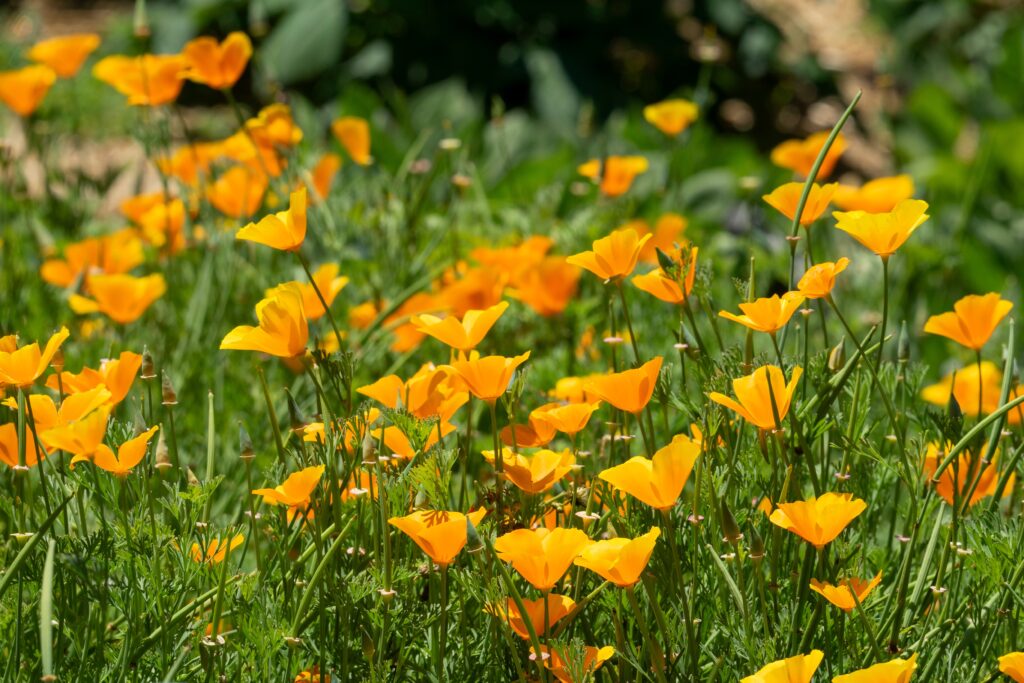
Poppies are beautiful self-seeding flowers that can easily return to your garden year after year. Their colorful blooms brighten any space and attract pollinators, making them perfect for a natural garden. Poppies tend to thrive in well-drained soil and full sunlight, making them ideal for most gardens. Once they seed, new plants will appear in the spring, offering a fresh batch of vibrant flowers.
These plants can tolerate a variety of conditions, making them adaptable to different garden environments. However, they prefer dry, well-draining soil and do best when left undisturbed. After blooming, the seed pods will burst, releasing seeds to grow next season. With minimal effort, your garden will be filled with poppies year after year.
Calendula
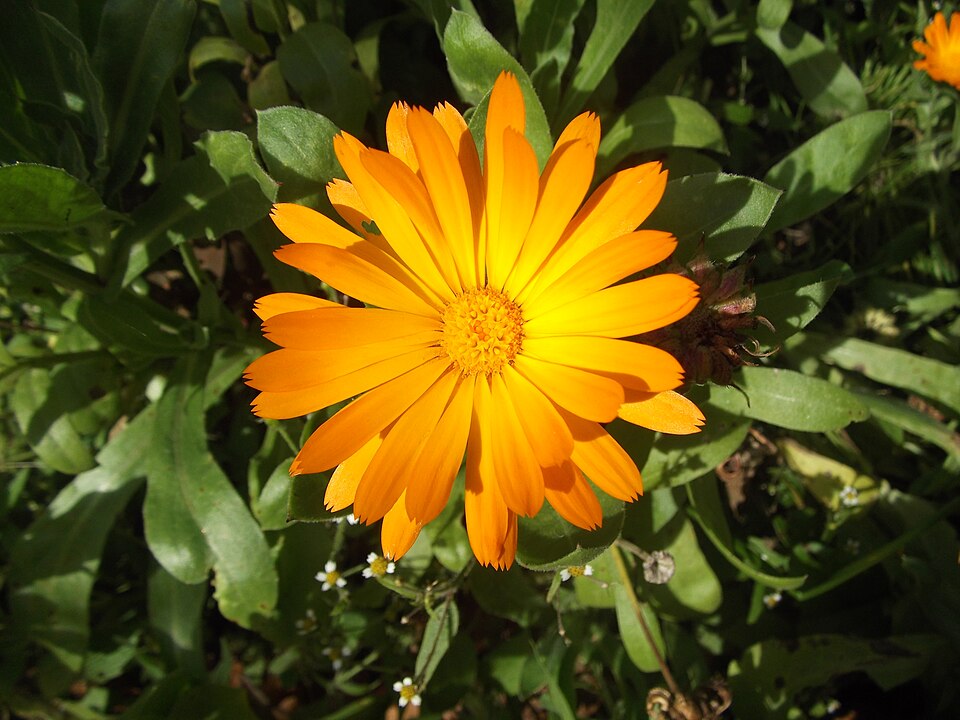
Calendula, or pot marigold, is an excellent self-seeding plant known for its bright yellow and orange flowers. It is easy to grow and care for, making it a great choice for beginners. Calendula thrives in sunny locations and well-drained soil. Once it blooms, the plant will drop seeds that will sprout in the following season, giving your garden a fresh look every year.
Calendula is not only beautiful but also useful, as its petals are edible and can be used in salads or teas. It also has medicinal properties and is often used in skin care products. The plant will continue to reseed itself, keeping your garden colorful with minimal maintenance. It is an excellent addition for anyone looking for a hassle-free, beneficial flower.
Nigella (Love-in-a-Mist)
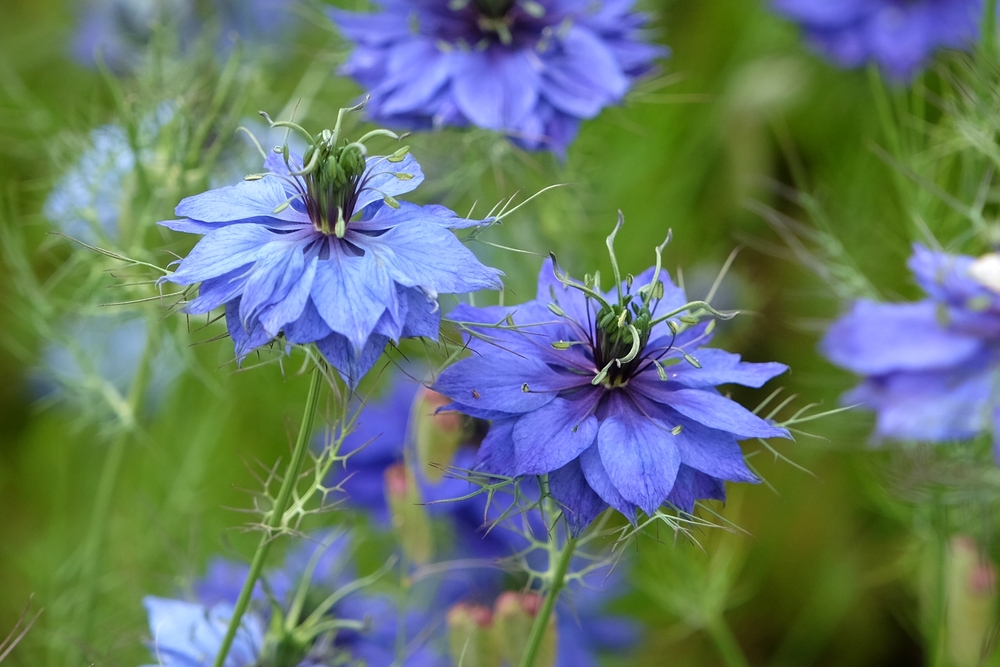
Nigella, often called love-in-a-mist, is a self-seeding annual that adds delicate beauty to gardens. It features intricate, fern-like foliage and vibrant flowers in shades of blue, pink, and white. Nigella grows well in well-drained, slightly alkaline soil and prefers full sunlight. Once the flowers fade, they leave behind seed pods that will drop and sprout the next season.
These plants are known for their unique appearance and ability to reseed with ease. They often create a dense, colorful carpet of flowers the following year, adding texture to any garden. Nigella is also a great choice for attracting beneficial insects, such as bees and butterflies. It is a low-maintenance plant that adds charm and interest to garden beds.
Sunflowers
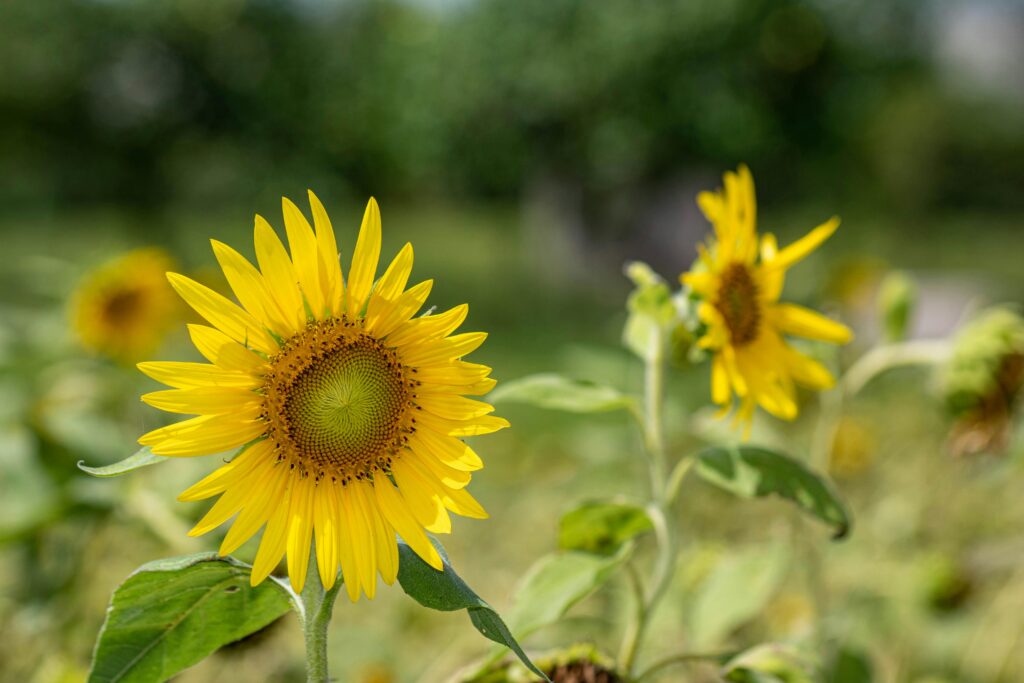
Sunflowers are iconic, bright, and cheerful flowers that return year after year, thanks to their self-seeding nature. These plants love full sunlight and are known for their large, striking blooms. After blooming, sunflower seeds are left behind in the heads, which naturally reseed the garden for the following season. Sunflowers are great for adding height and drama to your garden as they grow tall and majestic.
In addition to their beauty, sunflowers attract birds and pollinators, benefiting the entire garden ecosystem. They grow best in rich, well-drained soil, and a little space to spread out. Sunflowers are resilient, making them a great choice for gardeners who want a colorful, easy-to-grow flower. Watch as your garden is filled with towering sunflowers year after year.
Foxgloves
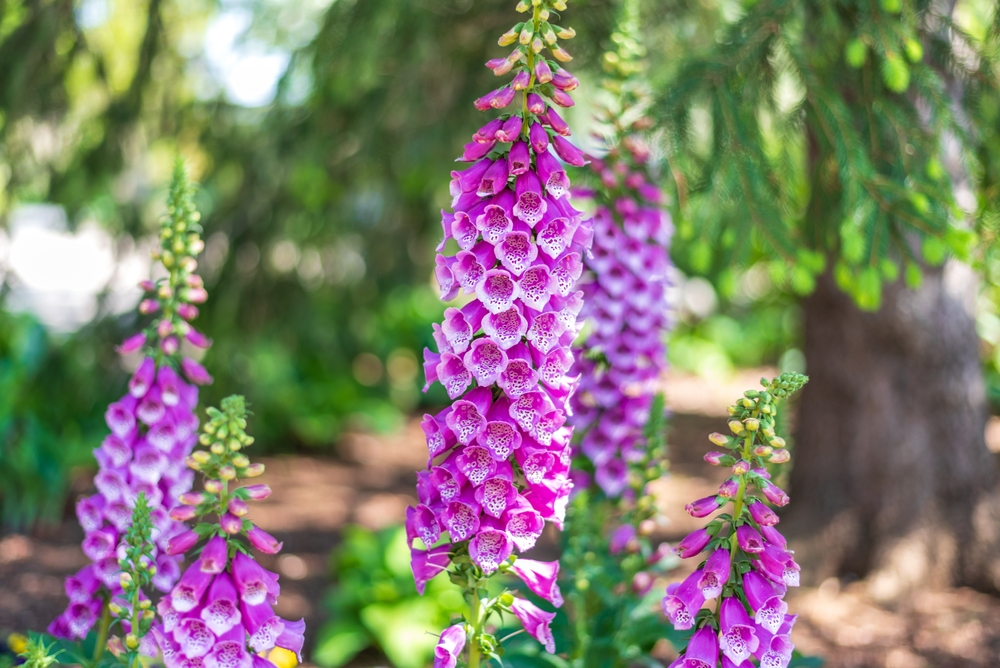
Foxgloves are striking self-seeding plants that produce tall spikes of tubular flowers in a variety of colors. These plants thrive in well-drained soil with partial shade, making them perfect for more woodland or shaded gardens. After blooming, foxgloves will drop seeds that sprout the following year, offering more flowers with little effort. They are known for their beauty and are often found in cottage gardens.
Foxgloves can grow quite tall, adding vertical interest to garden beds. The plants are also attractive to pollinators, such as bees, helping to support a healthy garden ecosystem. Once established, foxgloves will continue to reseed themselves each year, ensuring fresh flowers for seasons to come. They are an excellent choice for gardeners seeking a low-maintenance plant with a dramatic flair.
Sweet Alyssum
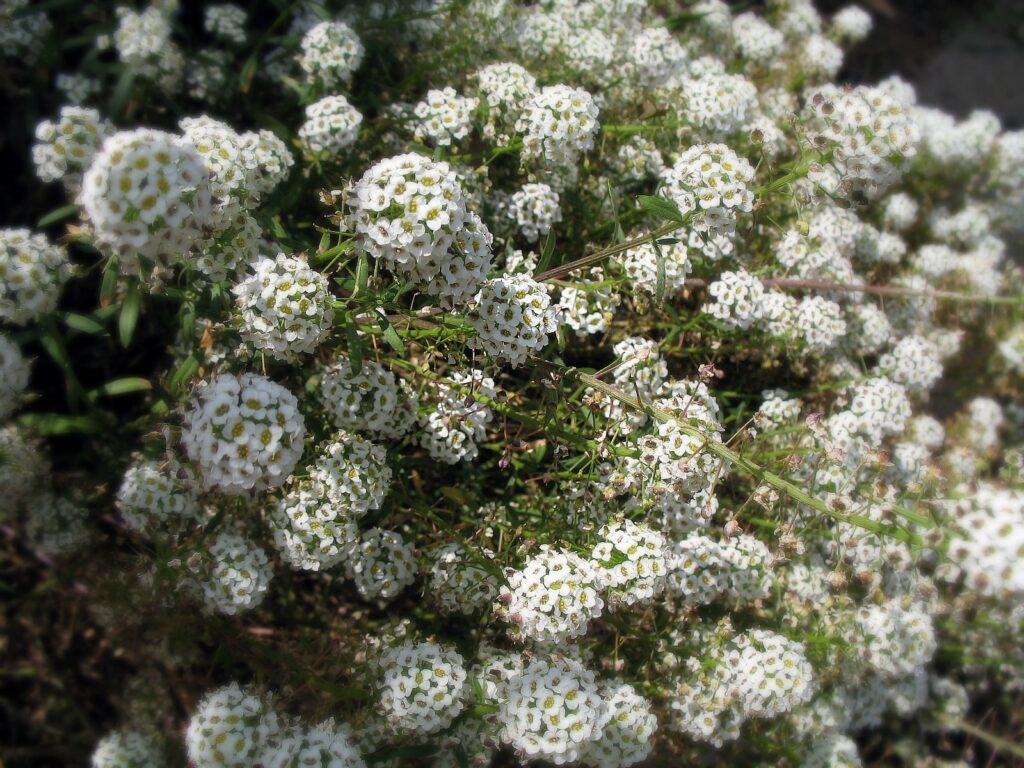
Sweet Alyssum is a fragrant, self-seeding plant that offers a lovely carpet of small, white or purple flowers. These plants grow well in full sun or partial shade and thrive in most soil types. Once established, they will naturally drop seeds, resulting in a fresh display of flowers the following year. Sweet Alyssum is a favorite for ground cover due to its dense, trailing growth habit.
This plant is especially attractive to pollinators, such as bees and butterflies, which adds to its value in a garden. Sweet Alyssum is perfect for hanging baskets, borders, or as a filler in garden beds. The plant will continue to reseed itself over time, giving you a beautiful, low-maintenance garden. It is an easy addition to any garden looking for color and fragrance.
Verbena
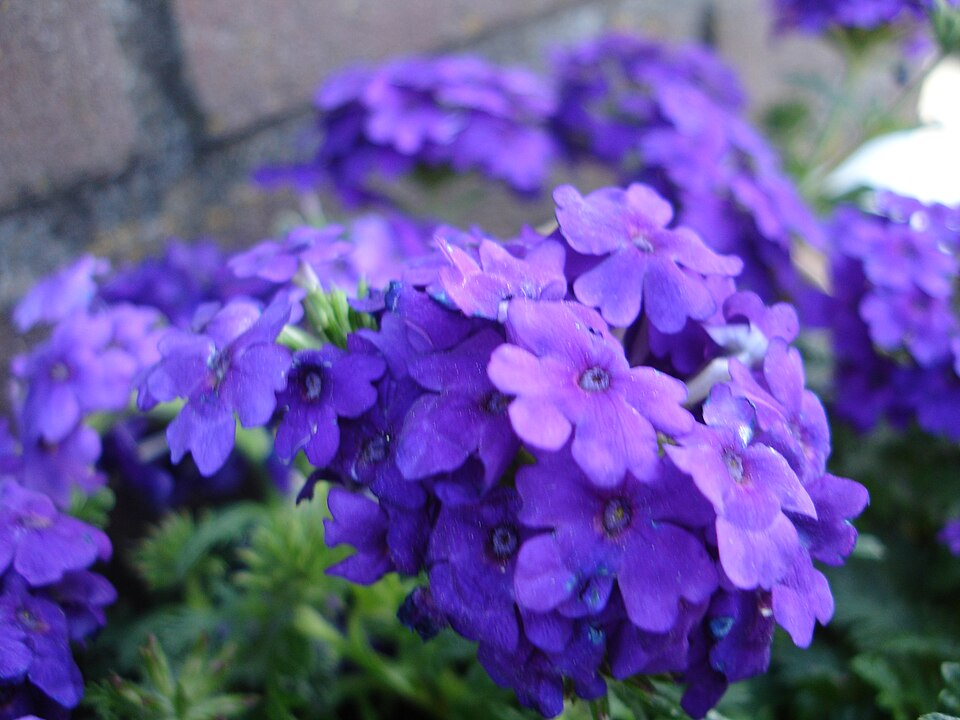
Verbena is a hardy, self-seeding plant known for its vibrant flowers in shades of red, purple, pink, and white. This plant thrives in full sun and well-drained soil, making it perfect for garden beds or containers. After flowering, verbena will drop seeds that will sprout and bloom again the following year. The plant’s ability to reseed itself ensures continued beauty throughout the seasons.
Verbena attracts a variety of pollinators, including bees and butterflies, making it a valuable addition to any garden. It is especially effective in hanging baskets, window boxes, and garden borders. Verbena is low-maintenance, requiring minimal care once established, and it adds a pop of color to your garden year after year. It is ideal for gardeners looking for reliable, vibrant blooms.
Zinnias
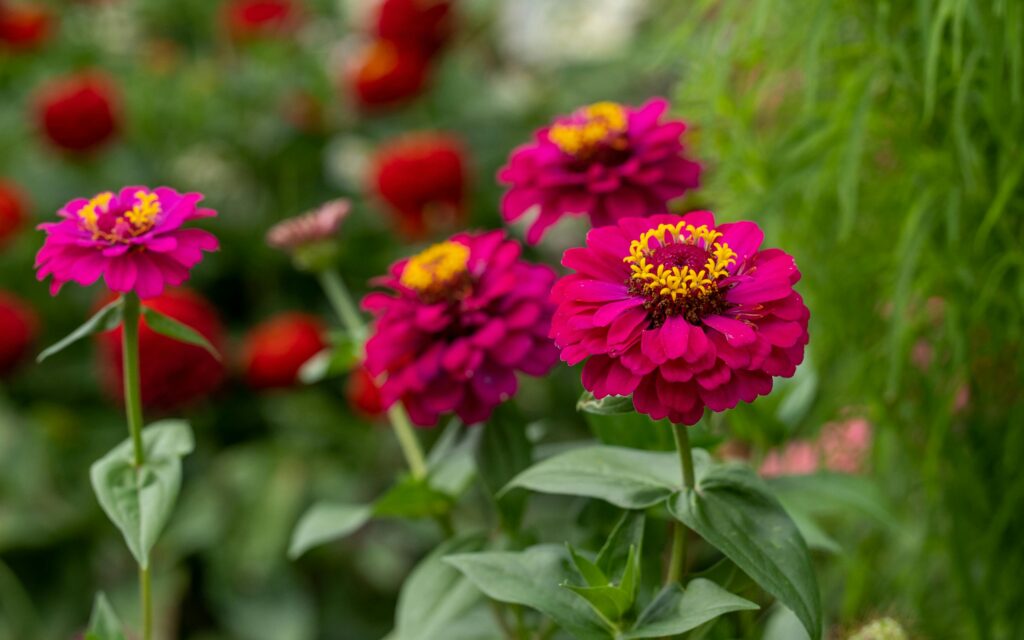
Zinnias are colorful, self-seeding annuals that thrive in sunny garden spots. These plants produce a wide range of bright, bold flowers in shades of pink, orange, red, and yellow. Once the flowers are spent, the plants drop seeds that will sprout again in the following season, offering fresh blooms with minimal effort. Zinnias are perfect for adding a burst of color to garden beds and containers.
These plants are loved by pollinators, including bees and butterflies, making them an excellent choice for pollinator-friendly gardens. Zinnias are hardy and can withstand a variety of growing conditions, including heat and drought. They are also easy to grow from seed, making them an affordable and reliable addition to any garden. Zinnias will keep your garden filled with color year after year, thanks to their self-seeding nature.
Heliotrope
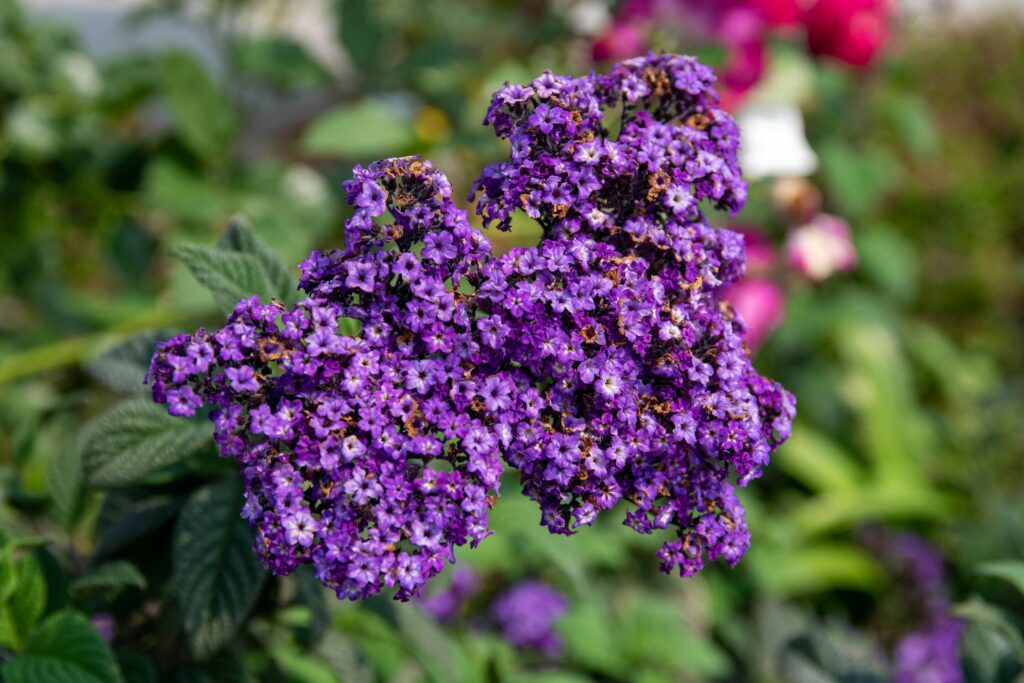
Heliotrope is a fragrant self-seeding plant that is perfect for gardens in need of colorful blooms and lovely scents. It features clusters of purple, white, or pink flowers that grow in clusters and are often highly fragrant. Heliotropes prefer full sun and well-drained soil, and they will reseed themselves after blooming. This makes them a great addition to any garden that needs a low-maintenance, beautiful flower.
Heliotrope is great for attracting pollinators like bees and butterflies. Its strong fragrance makes it a favorite for planting near patios or walkways, where you can enjoy the scent. Once planted, heliotrope will keep coming back each year, filling your garden with its colorful and aromatic blooms. It is an excellent choice for a fragrant, self-sustaining garden.
Columbine
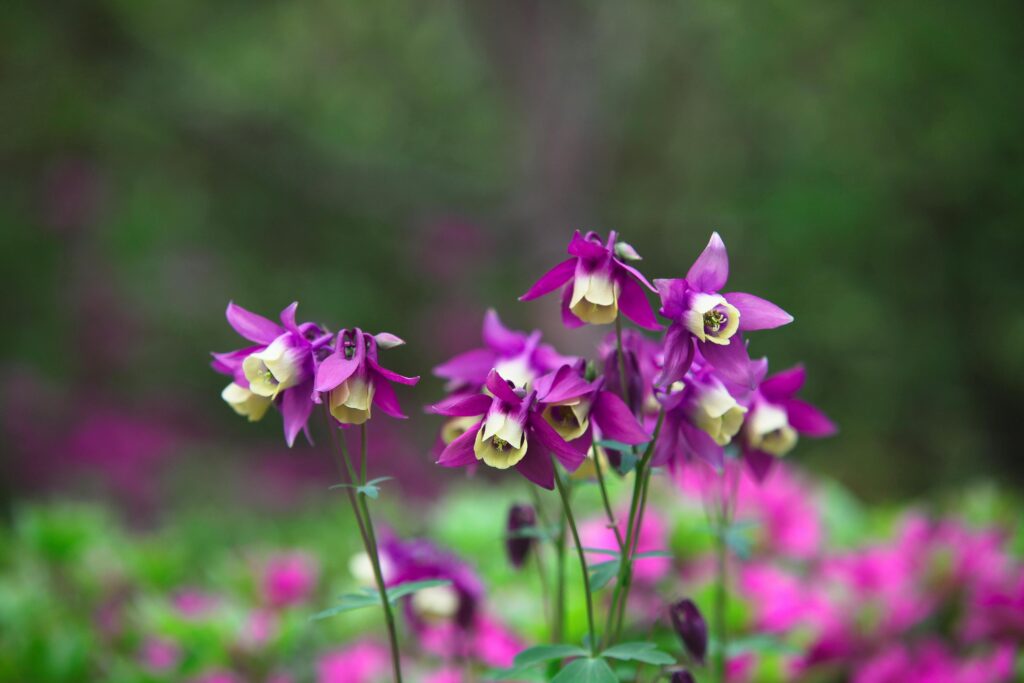
Columbine is a beautiful, self-seeding perennial known for its unique, bell-shaped flowers. These plants come in a range of colors, including purple, red, yellow, and blue, adding visual interest to any garden. Columbine prefers well-drained, slightly acidic soil and partial shade, making it ideal for woodland or shaded garden areas. After blooming, the plant produces seeds that will grow into new plants the following year.
Columbine is easy to grow and care for, making it a great choice for beginner gardeners. The flowers attract a variety of pollinators, especially hummingbirds, adding life to your garden. Once established, the plant will naturally reseed itself each year, ensuring new growth without any extra work. Columbine is perfect for creating a colorful, low-maintenance garden.
Lupines
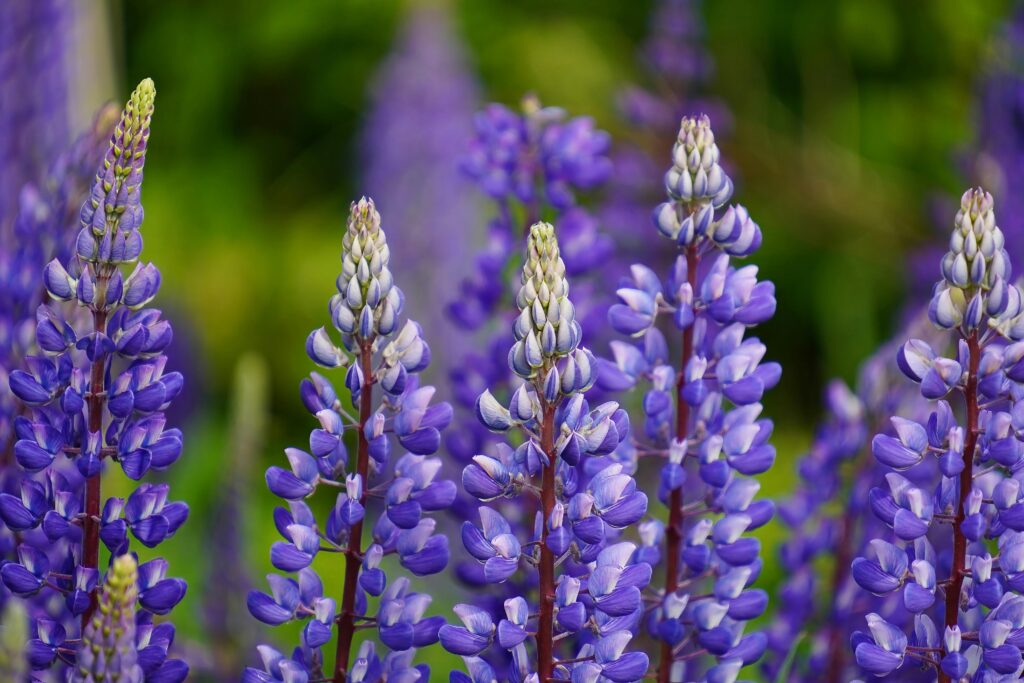
Lupines are stunning self-seeding plants that produce tall, spiky flower spikes in shades of purple, blue, and white. They thrive in well-drained soil and prefer full sunlight. After flowering, lupines will drop seeds that will sprout in the following season, providing beautiful blooms once again. These plants are perfect for adding height and color to garden beds or borders.
Lupines are ideal for attracting bees and butterflies, which help pollinate the flowers. They are great for attracting wildlife and creating a natural, wildlife-friendly garden. Once planted, lupines will continue to reseed themselves each year, making them a dependable addition to your garden. Their bold, spiky flowers add structure and vibrancy to any garden.
Lavender
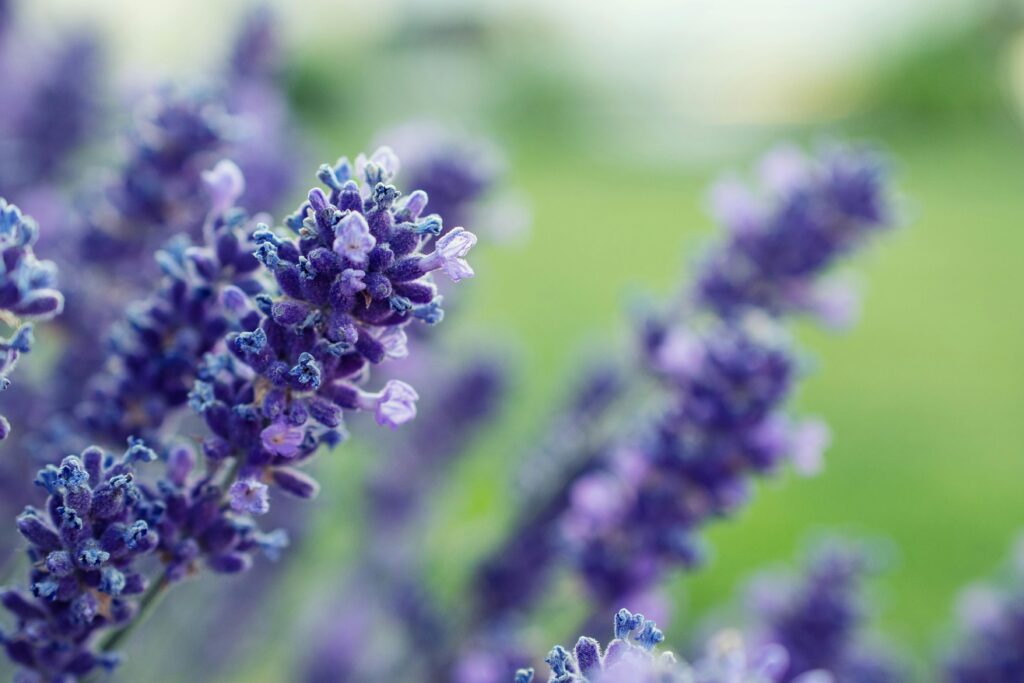
Lavender is a fragrant, self-seeding plant that produces beautiful purple flowers, making it perfect for gardens in need of both color and scent. Lavender grows best in well-drained soil with plenty of sunlight, and it will reseed itself after blooming. Once established, it will return year after year, providing both beauty and fragrance. Lavender is also drought-tolerant, making it a low-maintenance addition to your garden.
In addition to its beauty, lavender attracts bees and other pollinators, making it beneficial for the entire garden ecosystem. The plant is perfect for creating borders or adding fragrance to garden beds. Lavender is a versatile plant that can be used in both ornamental and culinary applications. It is an ideal choice for gardeners looking for a self-sustaining, fragrant flower.
These plants bring new life to your space while requiring little maintenance. Start incorporating them today, and enjoy a vibrant, low-maintenance garden that regenerates every year.
This article originally appeared on Avocadu.
